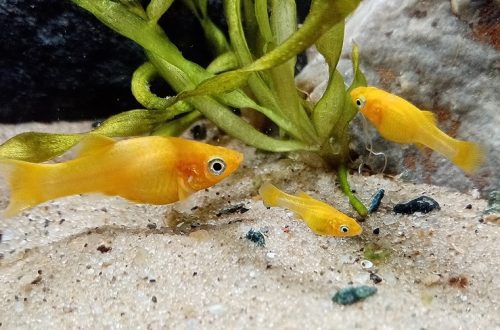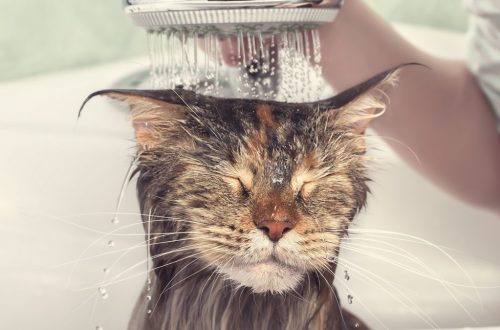
Positive and negative feedback on the content of decorative rabbits in city apartments
Usually dogs, cats and hamsters are purchased as pets. Less commonly birds, fish and guinea pigs. It is believed that it is useful for a child to have a creature in the house that is weaker than him and needs to be taken care of. So the baby learns kindness, patience and care for others.
Adults give birth to more serious little animals: snakes, crocodiles and other exotic things.
Recently, the range of pets offered by pet stores has expanded to include miniature pigs and rabbits.
Each of us saw ordinary rabbits in childhood in the village with our grandfather. They were kept in large special cages. The kids have always been interested in feeding them and watching how funny they eat. Weight of an adult animal can reach 12-15 kg. You can’t drag this into an apartment, no matter how much the child wants a bunny.
Demand creates supply. Especially for keeping in urban conditions, decorative rabbits were bred. Now there are already more than 60 types of decorative rabbits, differing in color, density and length of wool, ears and sizes. Before you go shopping for an animal, decide which one you want: small, weighing up to 1,5 kg or larger, with protruding or hanging ears, multi-colored or plain, fluffy or not. You also need to decide what gender of the animal you can keep.
Contents
Animal character
The main thing to be prepared for is that the rabbit is not a cat or a pocket dog that you can constantly keep in your arms. If the animal shows dissatisfaction with your excessive attention, then it is better leave him alone. Explain this to the children. Otherwise, the rabbit will be constantly under stress.
In general, domestic rabbits are quite smart animals and it is easy to accustom them to the rules of living in an apartment, in particular, to a tray that you need to go to the toilet on.
About the cowardly gray bunny, children’s fairy tales did not deceive us. Rabbits are really very shy, so you should avoid harsh and loud sounds, as well as any actions that can frighten the animal. Remember that any stress can provoke indigestion.
Rabbits are nocturnal animals, so during the day they will mostly sleep, and at night they will interfere with your sleep.
Место жительствР°
When purchasing a decorative rabbit, you must immediately buy a cage for him. often purchased pet housing 500*500 mm. The pet store can convince you that these sizes are enough. However, in order for the animal to feel comfortable and the limited space does not negatively affect its health, the dimensions of the cage should be 1000 * 1000 mm or 800 * 800 mm.
The place for the cage must be determined at a distance from heating devices and drafts. In addition, remembering his shyness, it is advisable to install it away from the TV, computer and other equipment that can make loud sounds.
In the cage you need to arrange a nest. It must be spacious enough. It is better to cover the bottom with sawdust, replacing them 2 times a week.
Caring for decorative rabbits
Caring for an animal is not a big deal.
- They are easily trained to urinate in the tray, just like cats.
- The cage should be cleaned at least once every 2-3 days.
- Gradually, you can accustom the rabbit to walks around the house and to hands. At the same time, carefully monitor the animal so that it does not damage furniture or shoes. Nature cannot be deceived, and a rabbit, even if it is a dwarf, does not cease to be a rodent. It is better if he always has a sufficient number of wooden blocks and twigs in his cage.
- You should monitor the condition of the teeth and claws of the animal.
- For the care of long hair, you must immediately buy special brushes and scallops. It is necessary to comb the animal daily, since when the wool is tangled and tangles form, they must be removed immediately. Such a haircut will not add beauty to a pet.
- Bathe rabbits only when absolutely necessary. This can only be done in warm water using special detergents. They must not contain any fragrances. After taking water procedures, the animal must be dried with a soft towel and provided with a warm place, without drafts, so that it can dry completely.
- No matter how spacious the cage is, the rabbit needs to move more than he can do in an enclosed space. Therefore, walking around the house under the supervision of the owners will be very useful for a pet. In the summer, you can take it out for a walk on the street. To do this, you need to purchase a special harness. It is useful for a rabbit to run around on the grass, to try the plants you like on the tooth. when walking, you should avoid sunny places, and you should not walk on a particularly hot and sunny day. This will help prevent heat or sunstroke.
- Claws should be done once a month cut with special tweezers. You need to buy them at the pet store.
- At least once a month, you need to examine your teeth, it is advisable to invite a veterinarian for this.
- Regularly it is necessary to carry out deworming of the animal. The timing, drugs and the rate of admission should be established by the veterinarian.
- The water in the drinker must always be fresh.
- It is advisable to invite veterinarians to the house, as a trip to the clinic will be a strong nervous shock for the rabbit.
Caring for Different Breeds of Domestic Rabbits
About animals such as decorative rabbits, the reviews are very contradictory. Most likely it all depends on the breed pet.
- Golan rabbit. It is an exact miniature copy of ordinary domestic rabbits. It’s the easiest to take care of. The animal is very calm. He easily gets used to hands and communication with children.
- Short haired dwarf rabbit. Caring for this breed is also easy. It should be borne in mind that during puberty it can show aggression and even bite.
- Dutch fold. Very calm and phlegmatic breed. Aggressiveness is not shown under any circumstances.
- Dwarf ram. Calm animals. Unlike other breeds, they are not very shy.
- Foxes are dwarf. They require daily grooming.
- Angora rabbits. The whole complexity of care comes down to careful care of the coat.
- Germelin. Does not tolerate heat. Very willful. The breed is difficult to train.
Food
Digestion is the weak point of these animals, so food must be carefully selected.
Usually rabbits eat quite coarse food, including branches of aspen, willow, linden and maple. Tree species such as walnut and poplar should be avoided.
Rabbits should always have dry grass available. It is from it that they get most of the nutrients. Especially useful dried nettle.
Fresh vegetables must be present in the diet: cabbage, carrots, beets, potatoes, cucumbers). Do not collect pet grass along highways or dog walking areas. You can collect young nettles, clover, dandelions. Bunnies will not refuse the tops of beets, radishes, turnips.
Animals can be given milk and fish oil, and as vitamin supplements, rowan berries, rosehips, sprouted grains and twigs of coniferous trees are suitable (they can be used infrequently and only in winter).
At present, it is possible to provide complete nutrition for ornamental rabbits using concentrated feed, which are presented in a large assortment in pet stores. There you can also buy mineral supplements, which are important for animals, especially during pregnancy. Reviews of such feeds can be found on the Internet.
Plants to Avoid When Feeding
- In no case should you offer a rabbit bindweed, milkweed of any kind, buttercups, celandine, dope, larkspur, wild cherry, tansy, hemlock, wormwood should be treated very carefully.
- Surprisingly, you need to refrain from cabbage of any kind.
- Green potatoes.
- Beets in large quantities.
- Feed grain not purchased in specialized stores.
- Legumes. They can cause flatulence. You can give food, but in limited quantities.
You can not feed decorative rabbits with fruits, sweets, flour products. Most importantly, the constant availability of a variety of food. Rabbits are noble gluttons and can eat up to 15 times a day.
With proper care, a decorative rabbit can become a family favorite for many years to come. Reviews about the content of decorative rabbits are very diverse, but how your relationship with them develops depends on you.
Review: Adorable, but very smelly creature. We clean the cage every day.
Natalie
Review: The most wonderful gift for a child over 7-8 years old, especially for the New Year. Our daughter’s delight knew no bounds. Of course, the smell is not pleasant, so I had to remove it from the children’s cage.
Victoria, mom Yuli
Review: The rabbit came to us by accident: friends attached him to good hands. He was very shy and did not allow himself to be cleaned up, which led to the fact that matted wool had to cut. Only a year later he got used to the hands and began to communicate easily with all family members.
Anastasia, Voronezh





